Arden Vul - Basement
This is our first proper dungeon level! With 21 keyed locations, it’s by far the smallest level (the next smallest is level 10 with 62, the mean is 135 and the median is 149). It’s also the simplest to run with only a few ways in or out, and only talking NPC and no gimmicks.
Random Encounters
1-in-10 every 3 turns, which comes out to an encounter every ~30 turns on average. This is more turns than there are rooms in the dungeon, so there’s a solid chance that you never trigger a random encounter (my group didn’t).
The entries are consistent with the rest of the module; random numbers of enemies (1d4+2 giant centipedes, 3d4 giant rats, 1d6+1 stirges, etc) with no other detail (reaction, activity, etc) given. Per On Randomness, I think we could improve this by cutting boring entries, and then filling the space back out with better details. For example, i’d probably trim this down to Lankios, 5 stirges, the carcass crawler, and 8 giant rats. Then, we can pull up ktrey’s encounter activity tables, and say that…
the stirges are clustering on a squealing Giant Rat
the carcass crawler is clasping mandibles together with staccato snaps
the giant rats are grinding down their teeth on exposed masonry
With an area as small as this, we don’t need to have a random table of encounters, we can instead have an ordered list of encounters. That saves us a roll, and makes prep easier. For example, if we know that the first random encounter will always be Lankios and the last will always be giant rats, we can better allocate our prep effort.
Encounter Areas
1-1: Basement
Among the junk, however, is the marble left leg of the colossal statue of Arden (see AV-30).
This needs a physical description (weight and dimensions); otherwise now you’re flipping back to AV-30 to get a sense of how large the statue is, and then realizing that it doesn’t give one.
From my estimates, the leg weighs ~27,000lbs, is ~24’ long, has a 4.5’ diameter at the thigh and 1.5’ diameter at the ankle. That’s a big leg!
Two corpses lie face down on the path towards the double-doors; one is a human cleric and the other a human fighter. Both corpses are recent and show signs of severe poisoning - multiple sting/injection marks and necrotic, blackened skin. One corpse clutches a potion bottle that is still full (elixir of health). The pair is still dressed in their armor (chain mail and splint mail), but weapons and other valuables are gone.
My favorite article on room description content is Interesting and Useful Dungeon Descriptions - Michael Prescott (2014). Here’s a great blurb:
So when they say, "What do we see?" they're not asking for an "interesting" description, they're asking for a useful one. They need information that will help them stay alive:
Should we go around this corner? (If we do, will we die?)
Should we use this spell now? (If we do, will we die later?)
Should we turn back? (Are we already too beaten up to survive the trip home?)
I frequently say that the gameplay is making informed, impactful choices. The information is super important. Here, we’ve got corpses that have been stung (a lot) to death, so that telegraphs that there are nearby things that sting you to death. This is very good.
The downside is that if you’re not careful, the information can be confusing and conflicting. Here’s what I mean:
“Two corpses lie face down on the path towards the double-doors; one is a human cleric and the other a human fighter.” → Adventuring parties are typically more than two people, so since there are only two corpses, this implies that the rest of their party is somewhere else. Unfortunately, there is no rest-of-the-party, and the PCs searching for one will be fruitless.
“One corpse clutches a potion bottle that is still full (elixir of health).” → This implies that the poison is fast-acting; the victim was unable to drink the elixir before they died (or that the elixir is unrelated to poisoning). Unfortunately, this is not the case; half of an elixir of health (350g, 2000xp, unearthed arcana p90) cures poison immediately; but poison doesn’t kill immediately.
“The pair is still dressed in their armor (chain mail and splint mail), but weapons and other valuables are gone.” → Someone looted their weapons and valuables, but didn’t take the potion or their armor. This implies that other people have been here in between the corpses dying and now. Further, this implies that there’s something wrong with the potion, and that there are other people lurking about (neither are true). It also implies that their weapons and valuables can be found further in (they can’t).
We’re getting pulled in all sorts of strange directions. What happened to their weapons and valuables? Why didn’t whoever took their weapons also take the potion? Why didn’t they drink the potion? What happened to their companions? These mysteries are never resolved, which teaches the players to ignore information (since it is irrelevant and incoherent), and that’s the opposite of what we’re trying to do.
1-1B: Giant Centipedes
A colony of 20 giant centipedes has made its nest in the rubble-choked hallway beyond the double doors. Only 7-13 are present in the nest at any given time; losses taken here or as wandering encounters should be subtracted from the overall number. The centipedes hear anyone squeezing through the doors at 1-1A, and will swarm to the attack. The centipedes completely ignore any characters smeared with the anti-vermin paste of Lankios the Hermit (see 1-6).
I really like everything that’s happening here. The centipedes are telegraphed by the corpses right in front of the door. There’s a tactically interesting situation with the hard-to-open double doors. The explicit callout that the source of the centipedes in the random encounter list is this nest. I find it extremely helpful when modules include guidance about where wandering monsters live when they’re not wandering, and how many of them there are total so they can be depleted. Killing the nest means you ignore the centipede result in the wandering encounter list, which in turn makes the dungeon feel less populated, which is accurate. All really cool.
I also appreciate the interactivity with Lankios’ paste; that’s a way to step up from a bunch of vermin in a hole. My only quibble is that it’s very hard to imagine the players actually getting their hands on the paste before they confront the centipedes.
Lankios and his paste are in room 6; the centipedes are in 1B. It’s theoretically possible to go all the way around, and then approach room 6 from the eastern hallway, but even still you have to get within 20ft of the centipede nest, so it feels like they’ll have to be dealt with regardless.
I’d probably move the door to 6 from the western side of the south wall to the eastern side of the south wall, which means the door goes from being ~25 feet away from the centipede nest to being ~45 feet away from the centipede nest and the PCs could plausibly sneak in.
Finally, because I just can’t help myself, it’s 7-13 centipedes. Quick! How do you roll that? Is it 6d2+1, 2d4+5, 1d2*6+1, 2d2*3+1, 3d2*2+1, or 1d4*2+5? All super common and easy to intuit rolls, obviously. My bet is on 2d4+5, for what it’s worth.
1-2: Spider Closet
A ruby (50 gp) has fallen to the floor, and may be found within 1-4 turns searching
This isn’t how searching works!
Here’s the DMG
It takes a turn to casually examine and map a 20x20 area, and then another turn to thoroughly search such an area. Granted, Gary gives “if there are many containers and much furniture in the area, the time might actually double that shown”, but it’s not clear how random amounts of searching time is supposed to actually work at the table.
Do you ask the players how long they’re willing to search for, then secretly roll to see if the random required time is at most the time they committed to? Do they tell you that they want to search, and then you say “okay, it takes (rolls) 3 turns, but then you find a gem”? How does the random time interact with multiple searchers?
I’d scrap the whole random thing and just use the DMG’s guidance; they find the ruby and the scroll if they spend the turn searching the room.
1-2A: Spider Web
The spiders have spun a very thin, but strong, web across the entrance to 1-3. In the darkness it is easy to miss the web: there is a 1 in 6 chance for any but the most cautious of characters to become bound in the webs. If the spiders in area 1-2 have not yet been discovered, they emerge immediately and attack. If the spiders are dead, or do not respond immediately, an enwebbed victim can escape in 2 rounds (+1 round per point of STR below 17). If the spiders are dead and a victim is entangled, thrashing may draw the attention of the giant snake from 1-11 (5% per round, cumulative).
I really appreciate this, and this is exactly what I’m talking about when I ask that authors mechanically describe their stuff so that the GM doesn’t have to invent game mechanics on the fly. This could have easily been written vaguely:
In the darkness, it is easy to miss the web, and any but the most cautious characters will likely become bound. The spiders in 1-2 can detect when prey has been ensnared, and any thrashing about is liable to draw the attention of the giant snake from 1-11.
But it wasn’t! Instead, we have easy-to-use concrete mechanics. Awesome.
1-3: Training Ground
There’s nothing wrong with the room from a gameplay perspective; in fact I think “it looks like a trap but isn’t” gag is fun. I do think the actual text is a good example of how not to write a room description.
Here’s a color-coded version:
Blue: historical information
Yellow: player-facing first impressions (landmark)
Pink: Information available after further interaction (hidden)
Purple: GM-facing notes
Say we re-arranged this to be landmarks → hidden → GM notes → history:
The floor is relatively clear; a thick layer of dust lies heavily over the floor. No signs of humanoid traffic disturb the dust, although a few lumps disturb it. An anvil rests on a pedestal near the eastern side of the room. On top of the pedestal is a silver chalice that seems, for some reason, to have escaped tarnish.
The lumps are the rotting remains of wooden staffs and poles, as well as one shield.
GM NOTE: Investigators may well suspect a trap, but there is none. The chalice may be put to good use in the mosaic room (1-12).
HISTORY: The priests of Thoth used this open area for training purposes.
Notice how much makes it much easier to run the room!
1-6: Lankios the Hermit
This large, former storage room is now the abode of a wizened human hermit named Lankios, who has a 66% chance of being here.
Barton uses this pattern a lot. A NPC might spend time in several rooms (which is reasonable), so he gives the probability that they’re in a room. If we inspect the rest of the room keys, Lankios also has a 15% chance to be in 1-7, and a 10% chance of being in 1-12 (note that 66+15+10 = 91).
Another example is the Goblin King Weskenim, who is 20% likely to be with his harem, 25% likely to be in his throne room, 25% likely to be holding court, 25% likely to be in the lower great hall (20+25+25+25 = 95).
I’m not sure how to actually use these frequencies. When we enter a room, do we roll the probability, and that tells us if he’s in the room or not (like, he’s kind of in this superposition of not being in any particular room until we get a yes-result and then he’s in that room). Do we need to go collect all of the probabilities, spin up a cumulative distribution function, and then roll that to figure out where the important NPCs are when the players enter a level?
For instance, for Lankios, this might be:
01-66: 1-6
67-81: 1-7
82-91: 1-12
92-00: reroll (or wandering)
I tend to prefer the later (as I find it easier to reason about the state of dungeon if I know where the important people are right now), but it’s work to go find all of the places where they might be.
Anyone daubing the goo on some part of his/her body will be avoided by vermin on Level 1 of the Halls for 3 hours.
I recommend extending this to vermin in general; the other levels also have giant rats and the like, and I don’t think we should restrict the goo’s utility to just level 1 (and I don’t think it makes sense in-universe).
Lankios is delighted to talk to anyone who does not threaten him. He speaks in obtuse, semi-poetical phrases, and often breaks into guffaws of laughter or sobs of tormented grief. He babbles about a lovely mage named Guivrel, a competition for her hand, and betrayal by a trusted friend, apparently named “K”. His role in that story is unclear.
I found this extremely difficult to roleplay off-the-cuff, so when my players hit this bit, I apologized, summarized his behavior, and told them I’d get back to them with some actual obtuse semi-poetical phrases.
Here are those phrases:
I have walked centuries in a single night, dreaming of judgments never spoken.
A trident for a holy man—what a blade to break a friend’s heart.
Her hair was spun gold, a snare for my heart … oh, cruel and wondrous bright was she!
Below, they mutter in unquiet rest, forever calling: ‘Traitor! Traitor!’—or was it ‘Savior’? I cannot recall…
Twas never mine to judge, yet the sword fell all the same. Now the sword weighs heavy on my soul.
I see her in the flicker of the flame, mocking me, dancing just out of reach …
Step beyond the painted mask to the place where hearts were broken and souls undone.
Root and rodent, boiled to sludge—this reeking broth wards off creeping things and creeping thoughts.
Bring her signet, bring me peace—or a curse upon us all. My mind cracks anew each day without it.
Stone boxes, silent guardians—hold your tongues! Spare me your silent accusations!
The righteous path is never lost, but mine is … cracked, worn, so dark. Could you show me the way?
I yearn for a verdict more than I yearn for my next breath.
A single drop of poison taints an entire cup—so one act of treachery and all is undone.
Mitra’s light… it still burns in my breast, though tarnished by the ashes of memory.
Behind the baboon’s painted grin lies a stair downward into darkest guilt … I have seen it.
Kaitor, the trusted friend—ha! Our bond was forged in the blood of oath and undone by a single dagger-thrust.
Come, sup with me on foul brew—bitter on the tongue, sweet in the soul. It keeps the nibbling teeth away.
This place stinks of undone vows and echoing ghosts. Listen! Can you hear them wail?
Why will these bones not crumble? Mitra’s breath keeps me upright when all else has rotted.
There is yet a key of gold … a door of black stone … perhaps beyond it, we shall find absolution.
Feel free to copy my homework!
1-7: Pool of Sludge
Some 10-20 draughts may initially be found in the pool, but the supply will slowly be replaced at the rate of 1-6 draughts per week.
I promise that this is the last time (for this review) that I rag on range notation. Is 10-20 rolled by 10d2, 2d2•5, 5d2•2, 2d6+8, 1d2•10, or 1d6•2+8? My bet is on 2d6+8, but that’s so hard to do in my head.
Another corpse may be found in the northeast corner, where Lankios unceremoniously pushed it (“so as not to spoil the pool!”).
These sorts of quotes are so helpful to get into the character. I’m thankful for this one but I wish there were a lot more!
The corpse is of a human magic user, and appears to have been drained of much of its blood through several large wounds on her neck (she was a victim of the stirges in 1-19). The magic user’s belt pouch holds a linen bag filled with gold dust (75 gp), a scroll of detect magic, and a vial of oil. A dagger is clutched in her hand.
Was this magic-user in the same party as the dead cleric and fighter near the door or is it a different party? The other party had their weapons and valuables removed - why does this one still have her dagger and gold?
I appreciate the telegraph about the stirges (and the explicit parenthetical to denote GM-facing text), but I find the other implications very confusing from a player perspective.
At the bottom of the pool is a bronze key to the secret door at 1-14.
Here, we should verify that the room for 1-19 also references this fact (and if it doesn’t, we should annotate it). Fortunately, it does! “Secret Door (south): The secret door is locked, and requires a key (currently at the bottom of the pool in 1-7).”
A+
1-8: Three Wise Monkeys
This is a neat trope 🙈🙉🙊!
The see-no-evil and hear-no-evil monkeys both fly, so we immediately need to know how tall the room is, because that determines if players can hit them with melee weapons as they flap about.
Barton specifies that the monkeys have a flight speed of 150’ and have class-C maneuverability. Here’s what that means:
I think Barton goofed the rules here.
The room is 20x20. The DMG states
Winged creatures cannot move at less than one-half speed and remain airborne (except for class B).
As class-C flying creatures, if they fly at their minimum of 75’, they can turn a maximum of 120°. This means that they cannot fly in this room; they will crash into a wall regardless of the path they take.
But, say we decide we want them to fly anyway; the other thing we need to figure out is how flight interacts with the rules for engagement and back attacks. Typically if you come within 10’ of a combatant, you must stop. From this blurb:
Flying combatants — whether they are eagles or dragons, men mounted on broomsticks, or hippogriffs — must make attack passes at their opponents, wheel about in the air, and attack again.
I think the intent is that the flying creature does not have to stop, but now I don’t really know how combat is supposed to play out.
1-9: Empty Chamber
The trash in this chamber has been pushed to each side, allowing a narrow path between the corridor and area 1-7. Nothing of interest can be found here.
Those making substantial noise (from searching) run the risk of attracting the stirges from 1-19. GMs should assign a chance from 10-50% based on the amount of noise the PCs make.
It’s stuff like this that makes me extremely curious about how the conversation at other GM’s table goes. Here’s how this room played out for us:
GM: The narrow hall opens into a 20x20’ chamber with a door on the eastern wall. The chamber is filled with trash, obscuring the door, though some of the trash has been pushed to the side to create a narrow path from the hall to the door. What do you do?
Thief: I’ll listen at the door and check it for traps.
Fighter: I’m on guard and alert, weapons out for anything that attacks us.
Other Fighter: I’ll search through the trash.
Mage: I’ll help search through the trash.
Cleric: I’ll check the walls for secret doors.
Other Cleric: I’ll help with the trash effort.
So like… on a scale from 10% to 50%, how much noise is this? Totally unclear to me; seems like a normal amount of noise. My players never specify that they’re searching loudly or quietly; do Barton’s? Do ya’lls? In a room like this, would you make them describe how they’re searching (to gauge the noise)? If so, does that get exhausting?
I say scrap it and just roll a 2-in-6.
1-10: Collapsing Ceiling
The door to this empty chamber is firmly closed, and stuck. The ceiling of the room within is completely unstable, and any movement inside is likely to produce a cave-in. There is a 25% chance per round (cumulative) that a cave-in will occur. The cave-in commences in the exact center, but quickly spreads until the entire ceiling has collapsed, burying the chamber in tons of rock. PCs must move decisively to the door in order to escape.
Round 1: 1-4 damage to anyone in center
Round 2: 1-6 damage to anyone in southern half
Round 3: 2-12 damage to those in southern half, 1-6 damage in northern half
Round 4: those in southern half are buried and killed, 3-18 damage to those in northern half.
Quick reminder that this is a 25x25’ room, and that a round in 1e is a full minute. Again, I want to demonstrate appreciation for actually including mechanics. It’s better to have them than not. Is the idea that once the ceiling starts collapsing that folks are going to dilly dally (and spend minutes in the room watching it collapse on top of them)? Otherwise, as far as I can tell, stating “I exit the room” is sufficient to always leave the room, regardless of how far in you were when the collapse started and how much encumbrance you have.
1-11: Giant Snake
Scattered among the skeletons are a pair of beryls worth 25 gp each; a pouch holding 88 sp; and a magical iron spear named Nightwind (see new magic items).
Then, if we follow the Nightwind reference:
The spear is heavy and almost impossible to wield (-5 to hit) until its name (carved in Mithric on its shaft) is spoken, at which point it becomes light and perfectly balanced. Once the name is spoken, Nightwind functions as a spear +1, +3 versus humanoids (including giant-class humanoids). Needless to say, the goblins of the Halls will be instantly suspicious of any who bears Nightwind openly. Experience Point Value: 800 G. P. Value: 4,000
Wait, why are the goblins instantly suspicious; are they familiar with Nightwind? Are other humanoid factions (halflings, beastmen, fishmen, kaliyani, priscians, set cultists, sun-scarred knights, varumani) also suspicious, or is it just the gobbos? Bizarre.
1-17: Feasting Carcass Creeper
Treasure: Chain mail; long sword; pouch with 37 sp, and 18 gp; and a map of areas 3-2, 3-12, 3-13, 3-15, 3-16, 3-18, 3-31, 3-32, and 3-33, with obscure annotations.
Uhhhhhh
I think it would be extremely useful for Barton to put together a book of handouts that has stuff like this. I’d pay!
Here’s the quick and dirty map that I made if you want to copy my homework.
1-19: Stirge Lair
This is a really cool set-piece encounter to build towards. It is twice-telegraphed (corpses in 1-7 and 1-13), and interactive (Lankios’ goo helps out). Clearing the area grants access to a couple of pretty big unlocks:
A treasure hoard worth 2126g
3 Magic items worth 1250xp and 6500g total
Adventuring notes (good information)
Safe passage to level 3 and level 5
A teleportation ring
Conclusions and Recommendations
Hopefully this is clear from the review, but this is so much better than the exterior or ruined city. The map is properly loopy, the play structure is clear. I still take issue with the room keys, but that’s a whole-module thing. Overall, it’s a simple and fun vanilla D&D dungeon crawl. Literal rats in the cellar! A quirky NPC to talk to! Treasure hoards, locked doors, magic pools, and campy puzzles! Love it.
I recommend:
Trim down the number of random encounters to just the most interesting-to-you ones. You probably only need to keep ~4. Polish them up by pre-rolling quantities and giving them a more evocative context.
1-1: give Arden’s leg physical properties: ~27000lbs, and ~24’ long with a ~3’ diameter on average. Moving the leg is one of those dang OSR-style challenges, and we need physical properties to properly describe the challenge and judge solutions.
1-5: put a name on the Zombie Porter’s dog collar (who makes a dog collar without putting on name on it???). I recommend ‘Duke’ for laughs.
1-6: copy my homework for Lankios’ semi-poetical phrases (or invent your own). Pre-roll Lankios’ location each time they explore this level.
1-8: Figure out ahead of time for how you want to handle aerial combat in this room in whatever system you’re using. Decide how tall you want the room to be.
1-9: scrap the variable probability thing and just use a 2-in-6 to alert the stirges if they search the room or otherwise make noise.
1-10: simplify the collapse to 1d4 damage to anyone in the center, and then death to anyone to wants to fuck around and find out afterward.
1-11: either figure out why the goblins recognize nightwind or scrap that idea (i scrapped it)
1-17: Make a map of 3-2, 3-12, 3-13, 3-15, 3-16, 3-18, 3-31, 3-32, and 3-33, with obscure annotations. Here's mine.
1-18: Figure out what a single boot of elvenkind does and how much it’s worth without the other (a pair is worth 1000xp and 5000g and lets the wearer have a 95% to move silently in the worst conditions).



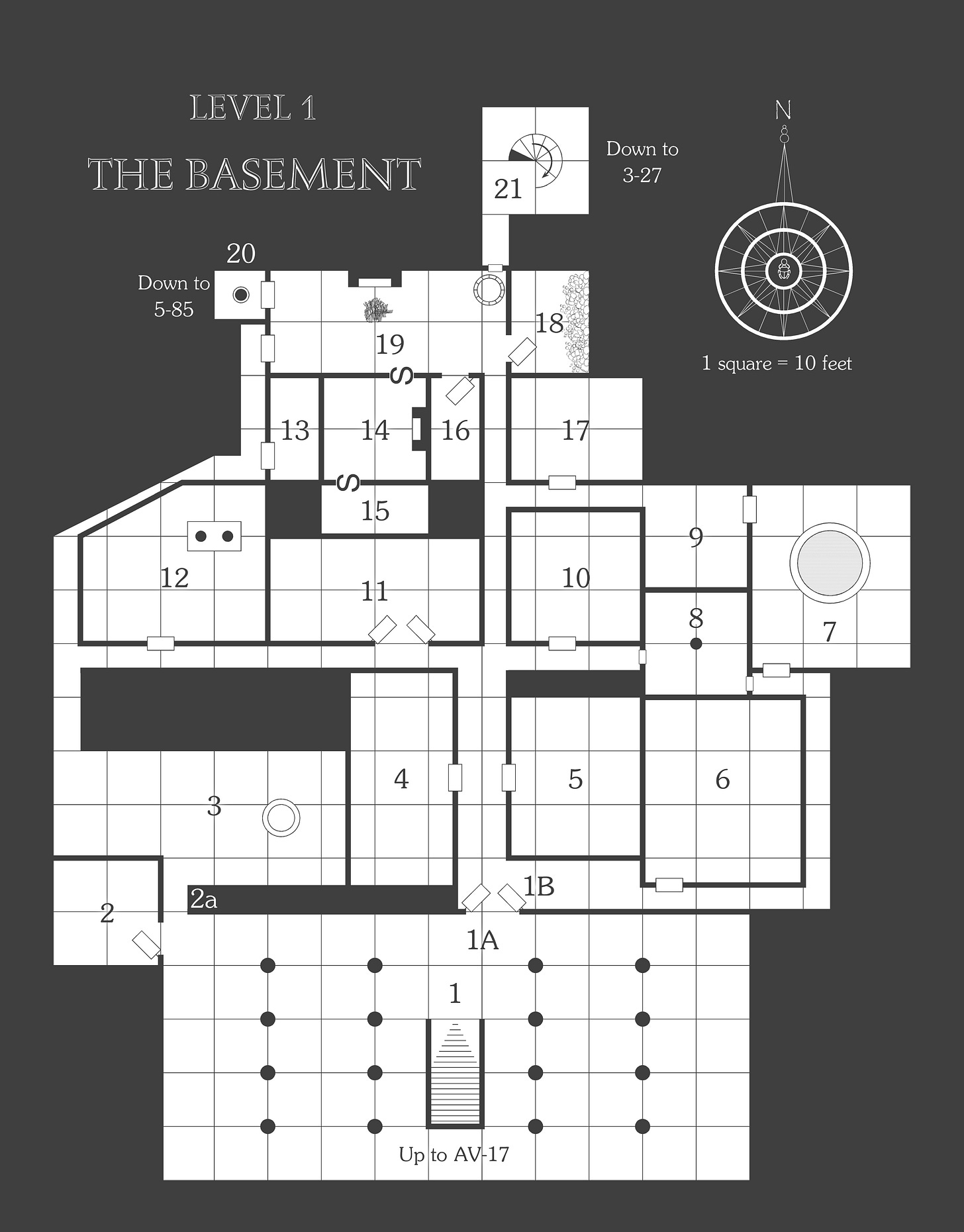
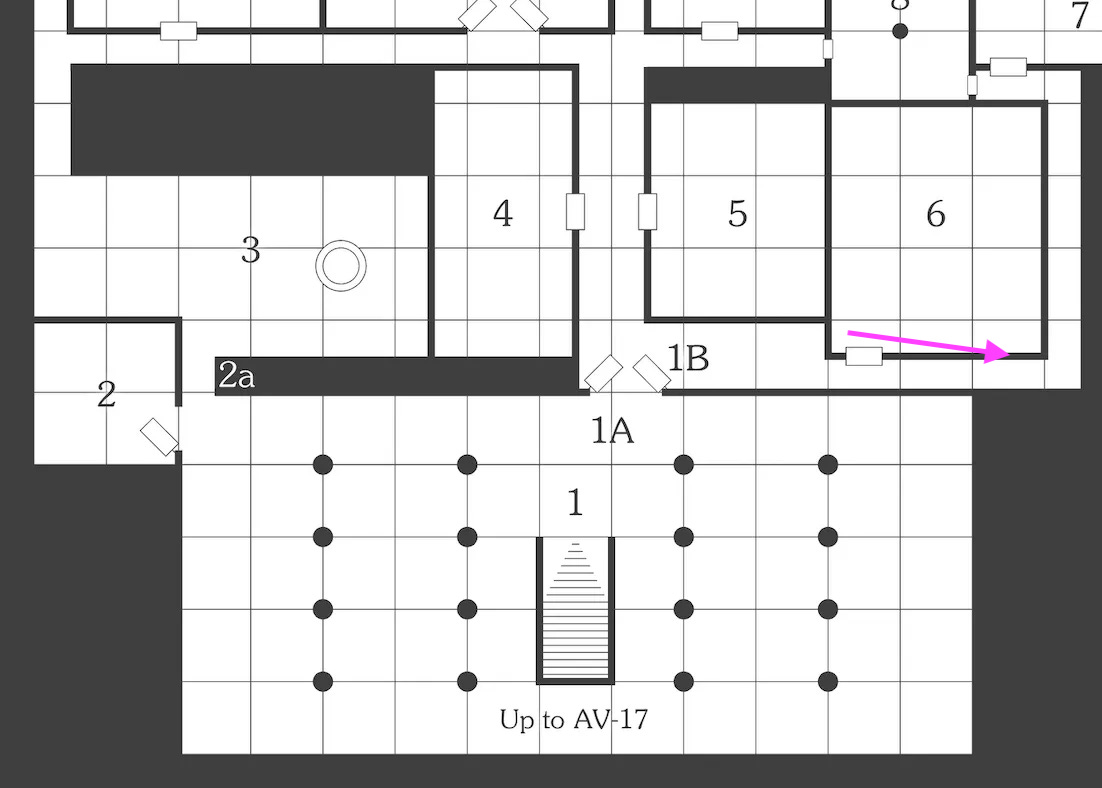
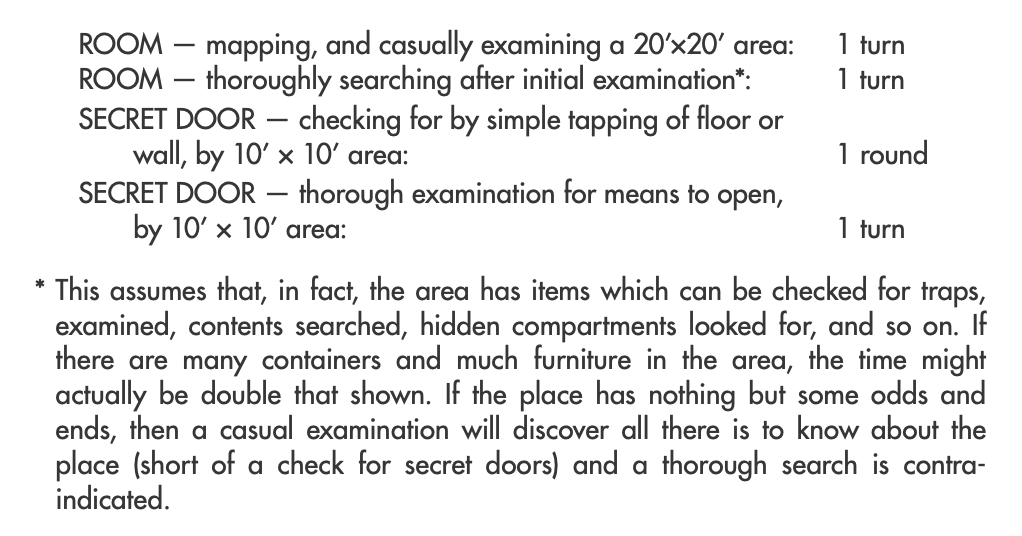

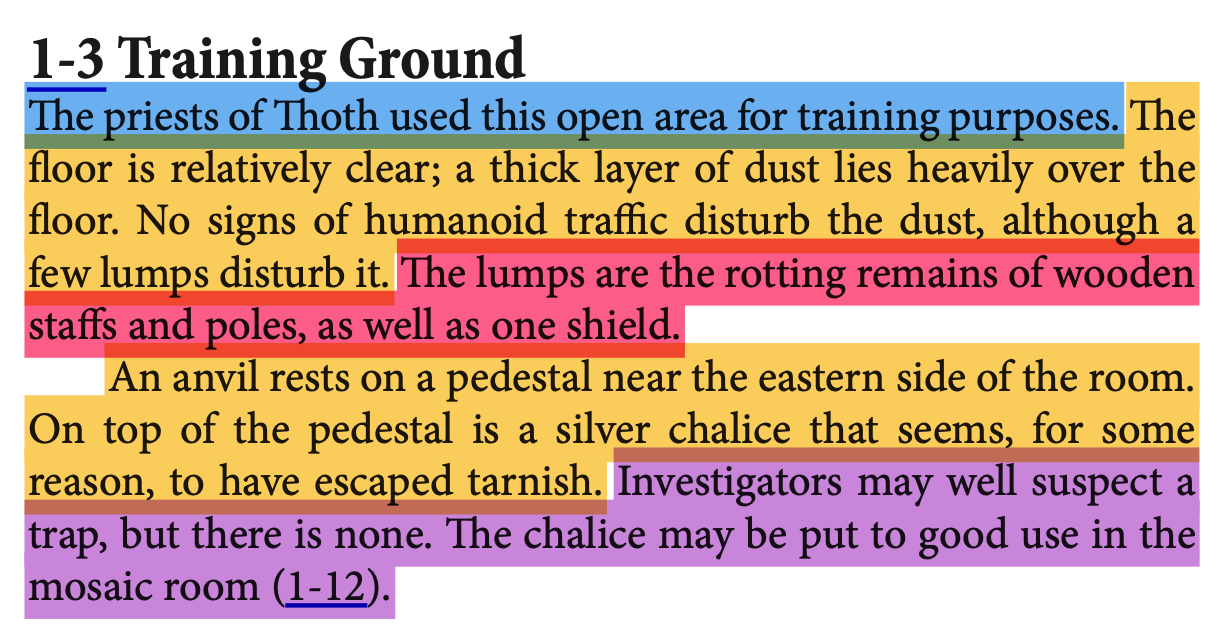
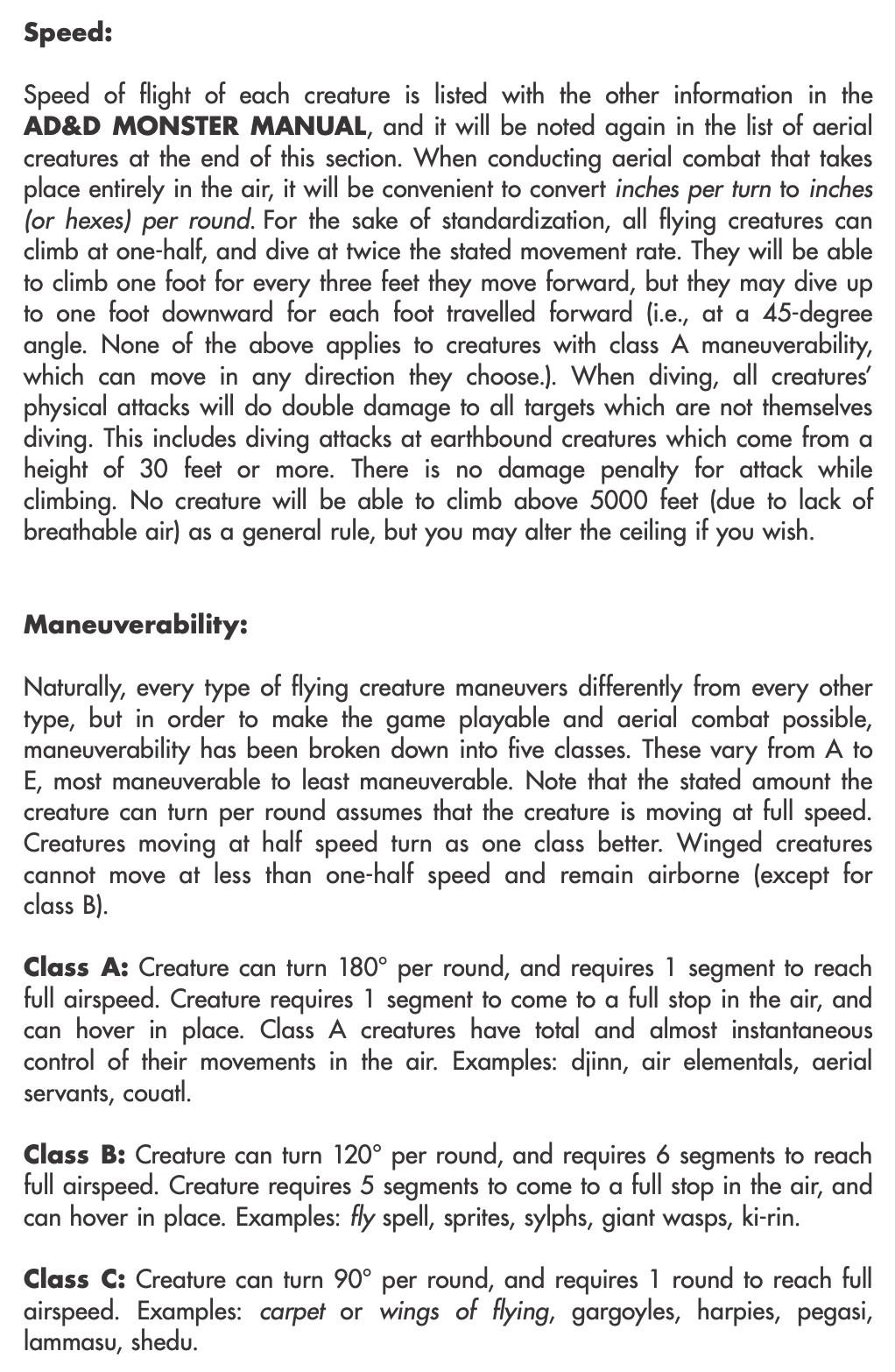
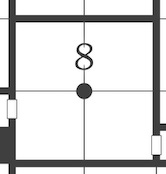
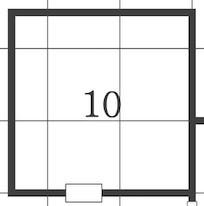
Don't really have much to add. Just wanted to feed your algorithm.
Great review as always. A lot of really interesting things to think about! I jotted down some thoughts as I was reading. Sorry for the wall of text...
1-1: This is a fascinating delve into the sort of unintended logical fallout that can occur when you are writing a space. All of your conclusions about party size, as well as what can be inferred from what was looted really do take dungeon writing to the "next level". I feel like these are the sorts of little things that get a pass at some tables or in homebrew content. But, when you're writing a published product you really have to consider how people at tables you've never played with might approach the content.
1-B: This was a constant complaint of mine in AV (or TSR modules). Don't tell me the numbers so I have to reverse engineer the math! I would have just gone with 2d6+1 since it's the least dice for the result without multiplication.
1-2A: I'd be really interested to how this room got re-written in a more streamlined format instead of giant text blocks. Your fake prose is 48 words, which is less than half of the original block. If you're trying to reduce word count or page count, sometimes we have to let the "rulings over rules" take the wheel.
1-3: Have you found the history notes useful? I find that it rarely added much to the experience at the table. My group never cares what the original purpose of a space was for unless it directly impacts the wider mechanics of the dungeon. In this room's case, knowing that it was originally a training room adds nothing for me and should just be cut.
1-6: I like the idea of "where is X NPC" when you enter the space, but give how often Barton does this, if the players enter level 4, I am going to have to roll 12 NPC locations? That seems rather silly. Personally, I think if you're going to do this in an adventure, I'd rather there be a sidebar somewhere that just mentions "Garry - Roll 1d6: 1-3 Area 12; 4-5 Area 16; 6 Area 23". Then we only have to roll the NPCs that become relevant as we find the spaces. Then you can just add a bullet to each room: Garry may be present here, see Garry's Location, p.X". I'm sure that has its own problems.
1-9: I always play it that searching is quiet unless something heavy or inherently noisy is involved. If the adventure doesn't state it openly, and it's trash or a bookshelf, no noise. You have to move a sarcophagus lid? STR check or you make noise. That sort of thing.
1-10: This room annoyed me. The ceiling just happens to collapse as the PCs enter? How timely! I feel like this room needs an interactive element that then triggers to collapse. Otherwise, it's just too convenient and a bit contrived that its collapsing while we're in here.
1-17: Any time I find a treasure map in a module I always groan if they expect me to make it up. Happens when I roll a random encounter with treasure and get a map as well. I always just apologize and get them a map later. I also feel like I have to justify how the map exists. At least this one has the rooms, but sometimes I also have to decide where and how this map of some other area exists in this set of treasure. Verisimilitude is a bear sometimes.